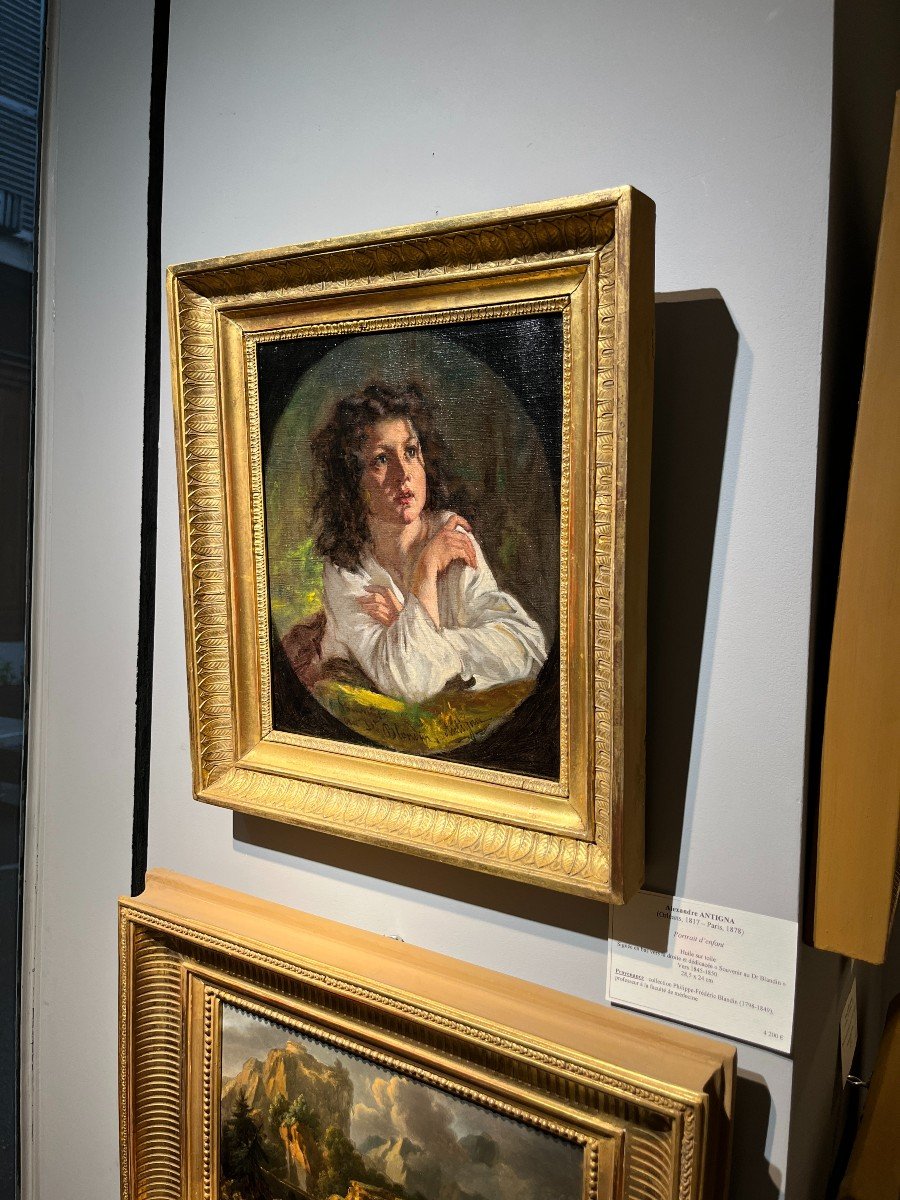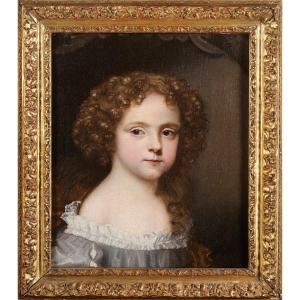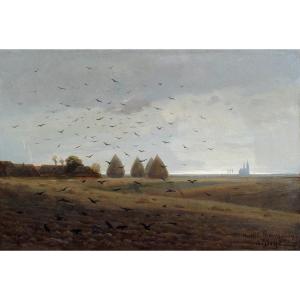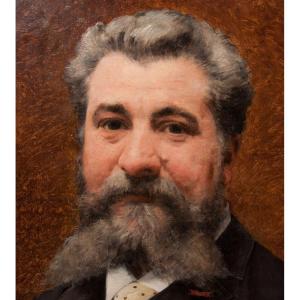(Orléans, 1817 – Paris, 1878)
Portrait of a child
Oil on canvas
H. 28.5 cm; W. 24 cm
Signed lower right and dedicated “Souvenir au Dr Blandin”
Around 1845-1850
Provenance: Philippe-Frédéric Blandin collection (1798-1849), professor at the faculty of medicine
Related work: Identical composition, of which our work can be considered a sketch.
Antigna entered the École des Beaux-Arts in Paris at the age of 22 and took classes with Paul Delaroche for seven years. Quickly classified among the “realist” painters and often compared to Gustave Courbet, he nevertheless distinguished himself by the poetry and religion with which he imbued his subjects. Alexandre Antigna is above all a painter of the humble, indeed one of the major aspects of his work is to reflect the suffering of the common people, victims of the consequences of the industrial revolution, as evidenced by his most famous paintings: L'Eclair (Musée d'Orsay), La Halte forcée (Musée des Augustins de Toulouse) or L'Incendie (Musée des Beaux-Arts d'Orléans), a painting that earned the artist a first class medal at the Salon of 1850-1851. This stylistic particularity brings him closer to the great literary movement established by Victor Hugo, who wrote his great novel Les Misérables during this same period of the 1850s, during his long exile on the Channel Islands. Despite his presence in a large number of museums worldwide, Alexandre Antigna is today a relatively unknown painter. Our small portrait of a young girl is treated with vivacity, sketched, representing her in bust, leaning, almost languid, on a low wall, her gaze upwards. Unfortunately, we have not found a larger composition in which this portrait would have been used. Nevertheless, there is a more accomplished work, preserved in a private collection, where the oval view of our canvas is not found. This one is only known from an old photograph.









































 Le Magazine de PROANTIC
Le Magazine de PROANTIC TRÉSORS Magazine
TRÉSORS Magazine Rivista Artiquariato
Rivista Artiquariato